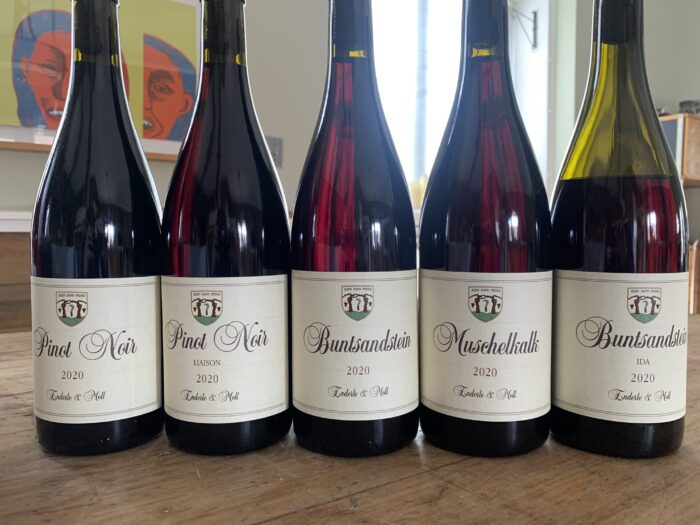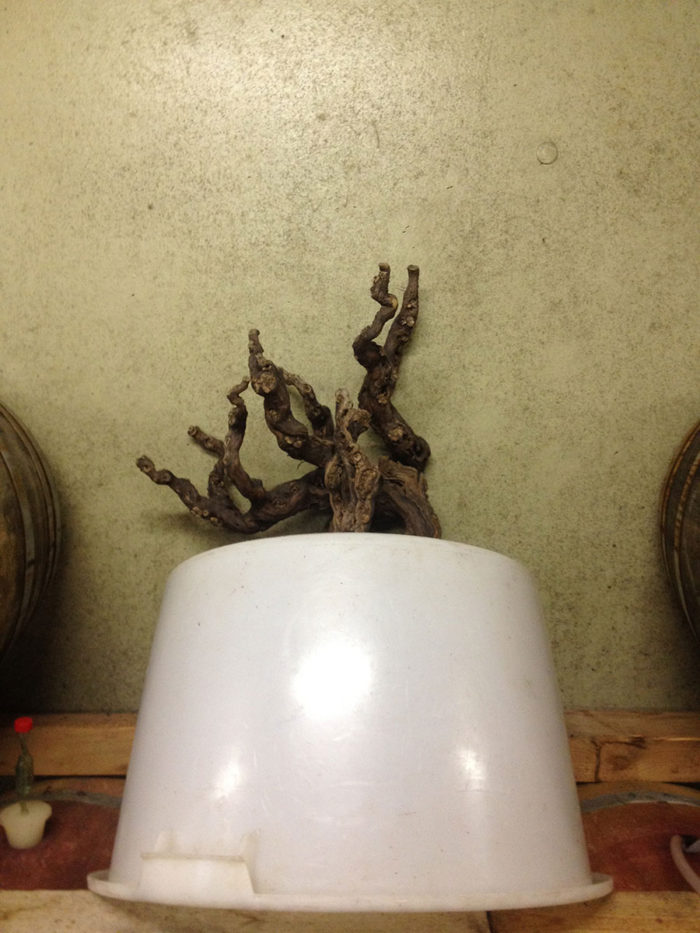Enderle & Moll are making the most soulful Pinot Noirs in Germany—for us, they are among the greatest.
This small Baden estate was one of the first in the region—if not truly the first—to focus on old vines and a delicate old school elevage instead of ripeness, new wood and extraction. Their debut in 2007 simply marked a watershed moment in German Pinot Noir.
It’s that simple.
Through a fluke series of events, the entire first vintage in 2007 was purchased for import into New York while Enderle & Moll were still very quietly making the first wines in their tiny cellar. This team farms less than five hectares, so even their highest-production wines are relative—the early impact of these wines in the U.S. means we still are able to offer the Grand Crus from some of the oldest vines in this region even now when the demand and success of the wines is clearer than ever before.
From their work has sprung perhaps one of the most impressive movement in German wine in the last decade. Although every winery in Germany now claims to somehow have a DRC barrel or two, Enderle & Moll were among the first to realize that the provenance of the barrels mattered, a lot, and they began, famously, with used Dujac barrels, though of course now they source barrels from around Burgundy.
All the Pinot Noirs are made with the same care and techniques, only the vineyard and age of vines differentiates the cuvées. Two to three weeks of maceration with a portion of stems, pressed directly into barrel with an old school hand-cranked basket press with native yeasts and without sulfur until bottling.
Truly, it’s hard to emphasize how contrarian (and even confrontational) their vineyard and cellar work appeared to the powerful coops of the region, to say nothing of the “famous” estates who at the time they started were busy pursuing efficiency, ripeness, size, alcohol and, yes, new oak, with abandon.
The wines have always been treatise on minerality filtered through soil, but have become even more refined year after year. With age, these wines simply transform. Their bitterness and briskness transforms into something more textured, nearly velvety though these wines are never plush. Lightness is matched to intensity, with profound aromaticexpressiveness, finesse, and weightless intensity.
“Rien sans peine” is the crest on each bottle and the corks—nothing without pain—not light words from a small producer who choose the difficult path at every turn.
The 2020 collection has JUST arrived, full notes are below, reach out to orders@vomboden.com if you’d like to find them in your area.

Pinot Noir Basis 2020 ~$30
The so called entry level Enderle & Moll Pinot lovingly called “Basis”: 30-year-old vines planted on the two predominant soil types in Baden: colored sandstone and shell limestone. The nose is stewed cherry with whiffs of amaro-like botanicals, giving a sense of 2020 being both a deeper and denser vintage for Enderle & Moll. The palate has a snap of cherry and cranberry piquancy – mild tannins and pleasantly friendly.
Pinot Noir Liaison 2020 ~$42
Liaison, something like Enderle & Moll’s “1er Cru” bottling, from vines 50 years old and older (what a country due west might call Vieilles-Vignes) planted on the two predominant soil types down here in Baden: colored sandstone and shell limestone. A “Liaison” of soil types if you will. It is always one of the most compelling Pinots out there, an absurd value that easily out-classes wines that are twice the price. Ruby and vibrant in the glass – this is unmistakably PURE Pinot. On the palate the wine is very fine and delineated, deeply soil driven. The tannins are woven and very much in focus, fruit is more purple and blue than that of Basis’s pure red and the wine is very moreish.
Pinot Noir Muschelkalk 2020 ~$60
Muschelkalk, or shell limestone is their oldest Pinot noir vines planted in the early 1950’s—so 70+ years old—and thought to be the oldest in the area. This wine is quite simply breathtaking – a flash of well integrated fine wood on the nose (a clear reminder that Enderle & Moll sources all of their barrels from top estates in Burgundy) intwined with warm yet cooling spices. This is, year in and year out, one of their greatest wines, Grand Cru in every respect. The wine is seductive but not showy, elegance and restraint is paramount for their style. Forest floor and just picked mushrooms, savoury and satiny.
Pinot Noir Buntsandstein 2020 ~$60
Buntsandstein, or colored sandstone from prime parcels of vines around 60 years old. A nose that is purely and unmistakably both Enderle & Moll and Baden – perfumed with tomatoes and beets. This wine is a bit wider, a bit more enveloping. The granular sand dust from the soil here comes through – like sea spray while sitting at the beach, infused with the cherry daiquiris in hand (or is it white claws that everyone is drinking these days?). Texturally this wine is the most pronounced of the vintage—more grip, but by no means overwrought as we are talking Enderle & Moll’s deft hand here. There is a lot of umami reading as soy sauce and seaweed, beckoning you to drink more.
Pinot Noir Buntsandstein Ida 2020 ~$65
Buntsandstein “Ida”, named lovingly after the former owner and caretaker of this small parcel planted around 50-60 years ago, with top clone material and farmed organic for many years. I have a sense there must be more clay here, because the wine just smells bigger, more textural – like it has more heft. This is really just outrageous; dripping with orange and tangerine oils – a splash of vanilla and really a beguiling lovely nose, wow: absolutely intoxicating. Chalky tannins, squared and dense, chewy even. Still very elegant and tense, but the most tapered of them—coiled at the moment, giving a sense of bounds of unlayering and density to unravel. The fruit here is skews on the cherry side with again lovely citrus oils that leave a certain freshness and minty coolness.
